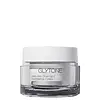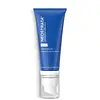What's inside
What's inside
 Key Ingredients
Key Ingredients

 Benefits
Benefits

 Concerns
Concerns

 Ingredients Side-by-side
Ingredients Side-by-side

Water
Skin ConditioningGlycolic Acid
BufferingButyrospermum Parkii Butter
Skin ConditioningC12-15 Alkyl Benzoate
AntimicrobialIsononyl Isononanoate
EmollientArachidyl Alcohol
EmollientCetearyl Alcohol
EmollientIsodecyl Neopentanoate
EmollientAlbizia Julibrissin Bark Extract
MaskingSodium Hydroxide
BufferingPolyacrylate-13
Gluconolactone
Skin ConditioningGlycerin
HumectantBehenyl Alcohol
EmollientDipentaerythrityl Pentaisononanoate
EmollientGlyceryl Stearate
EmollientAcetyl Tetrapeptide-11
Skin ConditioningAcetyl Tetrapeptide-9
Skin ConditioningHyaluronic Acid
HumectantPEG-100 Stearate
Polysorbate 20
EmulsifyingDimethyl Isosorbide
SolventPolyisobutene
Arachidyl Glucoside
EmulsifyingTocopheryl Glucoside
EmollientSodium Benzoate
MaskingCaprylic/Capric Triglyceride
MaskingSodium Gluconate
Skin ConditioningWater, Glycolic Acid, Butyrospermum Parkii Butter, C12-15 Alkyl Benzoate, Isononyl Isononanoate, Arachidyl Alcohol, Cetearyl Alcohol, Isodecyl Neopentanoate, Albizia Julibrissin Bark Extract, Sodium Hydroxide, Polyacrylate-13, Gluconolactone, Glycerin, Behenyl Alcohol, Dipentaerythrityl Pentaisononanoate, Glyceryl Stearate, Acetyl Tetrapeptide-11, Acetyl Tetrapeptide-9, Hyaluronic Acid, PEG-100 Stearate, Polysorbate 20, Dimethyl Isosorbide, Polyisobutene, Arachidyl Glucoside, Tocopheryl Glucoside, Sodium Benzoate, Caprylic/Capric Triglyceride, Sodium Gluconate
Water
Skin ConditioningGlyceryl Stearate
EmollientGlycolic Acid
BufferingMaltobionic Acid
BufferingGluconolactone
Skin ConditioningButyrospermum Parkii Butter
Skin ConditioningIsononyl Isononanoate
EmollientGlycerin
HumectantButylene Glycol
HumectantStearyl Alcohol
EmollientHydrogenated Polydecene
EmollientArginine
MaskingCyclopentasiloxane
EmollientPEG-100 Stearate
Dimethicone
EmollientAmmonium Hydroxide
BufferingPropylene Glycol
HumectantCetyl Alcohol
EmollientCyclohexasiloxane
EmollientPalmitoyl Tripeptide-1
Skin ConditioningPalmitoyl Tetrapeptide-7
Skin ConditioningTocopheryl Acetate
AntioxidantMalus Domestica Fruit Cell Culture Extract
Skin ConditioningVitis Vinifera Seed Extract
AntimicrobialEuterpe Oleracea Fruit Extract
Punica Granatum Extract
AstringentVaccinium Angustifolium Fruit Juice
AstringentRosa Damascena Flower Oil
MaskingMethyldihydrojasmonate
MaskingEthylene Brassylate
MaskingCaprylyl Glycol
EmollientLecithin
EmollientPEG-75 Stearate
Steareth-20
CleansingCeteth-20
CleansingTriethyl Citrate
MaskingXanthan Gum
EmulsifyingMagnesium Aluminum Silicate
AbsorbentPentaerythrityl Tetra-Di-T-Butyl Hydroxyhydrocinnamate
AntioxidantSodium Bisulfite
AntioxidantDisodium EDTA
Carbomer
Emulsion StabilisingPolysorbate 20
EmulsifyingChlorphenesin
AntimicrobialPhenoxyethanol
PreservativeCaramel
Cosmetic ColorantCI 19140
Cosmetic ColorantWater, Glyceryl Stearate, Glycolic Acid, Maltobionic Acid, Gluconolactone, Butyrospermum Parkii Butter, Isononyl Isononanoate, Glycerin, Butylene Glycol, Stearyl Alcohol, Hydrogenated Polydecene, Arginine, Cyclopentasiloxane, PEG-100 Stearate, Dimethicone, Ammonium Hydroxide, Propylene Glycol, Cetyl Alcohol, Cyclohexasiloxane, Palmitoyl Tripeptide-1, Palmitoyl Tetrapeptide-7, Tocopheryl Acetate, Malus Domestica Fruit Cell Culture Extract, Vitis Vinifera Seed Extract, Euterpe Oleracea Fruit Extract, Punica Granatum Extract, Vaccinium Angustifolium Fruit Juice, Rosa Damascena Flower Oil, Methyldihydrojasmonate, Ethylene Brassylate, Caprylyl Glycol, Lecithin, PEG-75 Stearate, Steareth-20, Ceteth-20, Triethyl Citrate, Xanthan Gum, Magnesium Aluminum Silicate, Pentaerythrityl Tetra-Di-T-Butyl Hydroxyhydrocinnamate, Sodium Bisulfite, Disodium EDTA, Carbomer, Polysorbate 20, Chlorphenesin, Phenoxyethanol, Caramel, CI 19140
Ingredients Explained
These ingredients are found in both products.
Ingredients higher up in an ingredient list are typically present in a larger amount.
This ingredient is also known as shea butter. It is an effective skin hydrator and emollient.
Emollients help soothe and soften your skin. It does this by creating a protective film on your skin. This barrier helps trap moisture and keeps your skin hydrated. Emollients may be effective at treating dry or itchy skin.
Shea butter is rich in antioxidants. Antioxidants help fight free-radicals, or molecules that may harm the body. It is also full of fatty acids including stearic acid and linoleic acid. These acids help replenish the skin and keep skin moisturized.
While Shea Butter has an SPF rating of about 3-4, it is not a sunscreen replacement.
Shea butter may not be fungal acne safe. We recommend speaking with a professional if you have any concerns.
Learn more about Butyrospermum Parkii ButterGluconolactone is a PHA. PHAs are a great gentle alternative to traditional AHAs.
When applied, Gluconolactone has the same affect on skin as AHAs such as lactic acid. It helps dissolve the dead skin cells in the top layer of your skin. This improves texture and brightens the skin.
PHAs are more gentle than AHAs due to their larger structure. They do not penetrate as deeply as AHAs and take a longer time to dissolve dead cells. Studies show PHAs do not cause as much irritation.
Gluconolactone has some interesting properties:
In a 2004 study, Gluconolactone was found to prevent UV damage in mouse skin cells and has not been found to increase sun sensitivity. However, we still recommend wearing SPF daily.
This ingredient is is an created by reacting gluconic acid with an alcohol.
Learn more about GluconolactoneGlycerin is already naturally found in your skin. It helps moisturize and protect your skin.
A study from 2016 found glycerin to be more effective as a humectant than AHAs and hyaluronic acid.
As a humectant, it helps the skin stay hydrated by pulling moisture to your skin. The low molecular weight of glycerin allows it to pull moisture into the deeper layers of your skin.
Hydrated skin improves your skin barrier; Your skin barrier helps protect against irritants and bacteria.
Glycerin has also been found to have antimicrobial and antiviral properties. Due to these properties, glycerin is often used in wound and burn treatments.
In cosmetics, glycerin is usually derived from plants such as soybean or palm. However, it can also be sourced from animals, such as tallow or animal fat.
This ingredient is organic, colorless, odorless, and non-toxic.
Glycerin is the name for this ingredient in American English. British English uses Glycerol/Glycerine.
Learn more about GlycerinGlyceryl Stearate is a mix of glycerin and stearic acid.
It is used to stabilize the mixing of water and oil ingredients. By preventing these ingredients from separating, it can help elongate shelf life. It can also help thicken the product's texture.
As an emollient, it helps soften skin and supports barrier-replenishing ingredients.
In cosmetics, Glyceryl Stearate is often made from vegetable oils or synthetically produced.
This ingredient may not be fungal-acne safe
Fun fact: The human body also creates Glyceryl Stearate naturally.
Learn more about Glyceryl StearateGlycolic Acid is arguably the most famous alpha hydroxy acid (AHA) with tons of research backing its benefits.
It is found naturally in sugar cane but the form used in skincare is usually synthetic for purity and stability.
Glycolic acid removes the top layer of dead skin cells to allow newer and fresher ones to emerge.
AHAs work by breaking down the structural “glue” that holds old skin cells in place. When that buildup is gone, your skin can renew itself more efficiently.
Research also shows glycolic acid stimulates collagen production, helping to firm and thicken the skin over time. This is one of its biggest advantages over other AHAs.
Overall, glycolic acid helps with:
Fun fact: Glycolic acid boosts skin hydration by helping it produce molecules that increase hyaluronic acid naturally.
To work best, glycolic acid products should have a pH between 3-4 (that’s where exfoliation is most effective but still gentle on skin).
The pH and concentration of a product are key to its effectiveness:
It is normal to feel a slight stinging sensation when using glycolic acid. This usually fades as your skin adjusts.
Because glycolic acid has the smallest molecular size in the AHA family, it can penetrate deeper, which enhances its effectiveness but also makes it more likely to irritate sensitive skin.
If your skin is very sensitive or prone to rosacea, glycolic acid may be too strong; in that case, try milder options like lactic acid or a PHA instead.
Recent studies suggest glycolic acid might even help protect against UV damage. But don’t skip sunscreen! Freshly exfoliated skin is more sensitive to the sun.
Glycolic acid is a skincare superstar. It smooths, brightens, hydrates, and firms the skin. Unless you’re highly sensitive, it’s well worth adding to your routine.
Read more about some other popular AHA's here:
Learn more about Glycolic AcidIsononyl Isononanoate is a synthetic skin-conditioner and texture enhancer. It is created from nonanoic acid, a fatty acid found in cocoa and lavender oil.
As an emollient, Isononyl Isononanoate helps keep your skin soft and smooth. This is because emollients create a barrier on the skin to trap moisture in.
Isononyl Isononanoate helps give products a velvet feel and improves spreadability.
Learn more about Isononyl IsononanoatePeg-100 Stearate is an emollient and emulsifier. As an emollient, it helps keep skin soft by trapping moisture in. On the other hand, emulsifiers help prevent oil and water from separating in a product.
PEGS are a hydrophilic polyether compound . There are 100 ethylene oxide monomers in Peg-100 Stearate. Peg-100 Stearate is polyethylene glycol ester of stearic acid.
Polysorbate 20 is made by combining ethoxylation of sorbitan, ethylene oxide, and lauric acid. It is a mild cleansing agent, surfactant, and emulsifier.
As a surfactant, it helps collect dirt and oils for washing. Emulsifiers prevent oils and water from separating.
Polysorbate 20 also adds scent to a product. Since it is made using sorbitol, it has a sweet scent. Sorbitol can also be found in fruits such as apples and peaches.
The lauric acid used to create Polysorbate 20 is often derived from coconuts.
Polysorbate 20 may not be fungal acne safe.
Learn more about Polysorbate 20Water. It's the most common cosmetic ingredient of all. You'll usually see it at the top of ingredient lists, meaning that it makes up the largest part of the product.
So why is it so popular? Water most often acts as a solvent - this means that it helps dissolve other ingredients into the formulation.
You'll also recognize water as that liquid we all need to stay alive. If you see this, drink a glass of water. Stay hydrated!
Learn more about Water